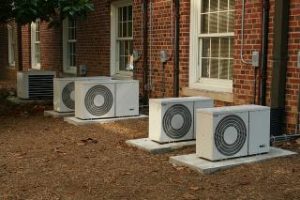Get the Most From Your Building’s HVAC System by Aiming and Redirecting Vents
Thanks to the Pennsylvania and Maryland area’s hot, humid summers and snowy winters, you’re bound to get some complaints if your building’s heating and cooling system isn’t optimized to keep everyone comfortable. Redirecting vents is one way you can fine-tune your system to do that. By directing conditioned air exactly where it’s needed most, you’ll be able to provide comfortable temperatures in any kind of weather.
Directing the Air in Your Rooms
Most likely, the vents in your building are covered by standard vent covers in the form of metal or plastic grilles that are screwed in on top of the vents or air registers. These covers are designed to keep foreign objects from falling into the vent and being blown into the duct system where they could damage your HVAC system’s components. In addition, the covers help diffuse the air coming out of the ducts so you aren’t blasted with a single, powerful stream of air.
If the only result you expect from redirecting vents is somewhat softer airflow to prevent drafts, you can achieve this with a different type of vent cover. Vent covers made of wood have thicker slats than metal or plastic models, so they break up airflow more effectively. Decorative metal covers with elaborate patterns, rather than simple slats, also help with redirecting vents to provide a less concentrated airflow.
If your goal is to direct the airflow more precisely, vent deflectors are a better choice. These plastic covers are placed over the vents to guide airflow in a particular direction. They’re available for both floor vents and wall vents. Deflectors have three main functions:
- Directing airflow away from work areas to prevent uncomfortable drafts.
- Directing airflow away from curtains, plants, and equipment to prevent disruptive breezes.
- Directing airflow away from walls and furniture, and toward the center of the room to provide more even temperatures.
There may also be times when a vent is blocked by furniture, equipment or another item. In these cases, a vent extender can help. These long, flat covers are placed over the existing vent cover to guide air out from under the item of furniture so the air can flow out into the room.
Before you buy a vent deflector or extender, measure your vents to determine the size of cover you’ll need. While many deflectors and extenders are expandable, not all are. Also check that you’ll be able to install them on top of your existing vent covers. Most are fitted with magnets designed to secure them to metal vent covers. If you have plastic or wooden covers, choose models that can be secured to these.
Directing the Air in Your Duct System
To direct airflow away from unused rooms and toward rooms that need more heating and cooling, you have several options. One is to use vent deflectors with hoods that can be lowered over the vent to block airflow. Another is to apply magnetic vent covers. These flat sheets of rubber are magnetized to hold them in place over vents. Avoid closing more than 10 percent of your vents.
Closing too many vents creates a pressure imbalance in the duct system, which can damage your HVAC system’s components.
If you often find you need more heating or cooling in one part of your building than in another, consider having a zoning system installed. A zoning system uses dampers inside the ducts that can be opened or closed to direct airflow from one part, or “zone,” of the building to another without causing damaging pressure imbalances.
Our goal is to help educate our customers about Plumbing, HVACR, Fire Protection, and Alarm Systems in Mechanical, Commercial, and Residential settings. For more information about redirecting vents and to view projects we’ve worked on, visit our website!
Photo Credit: cohdra/morgueFile








